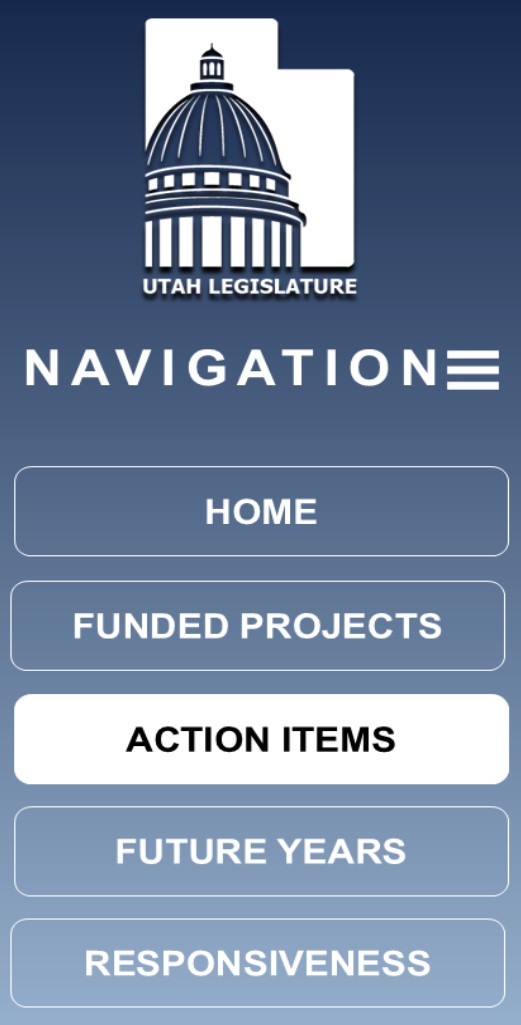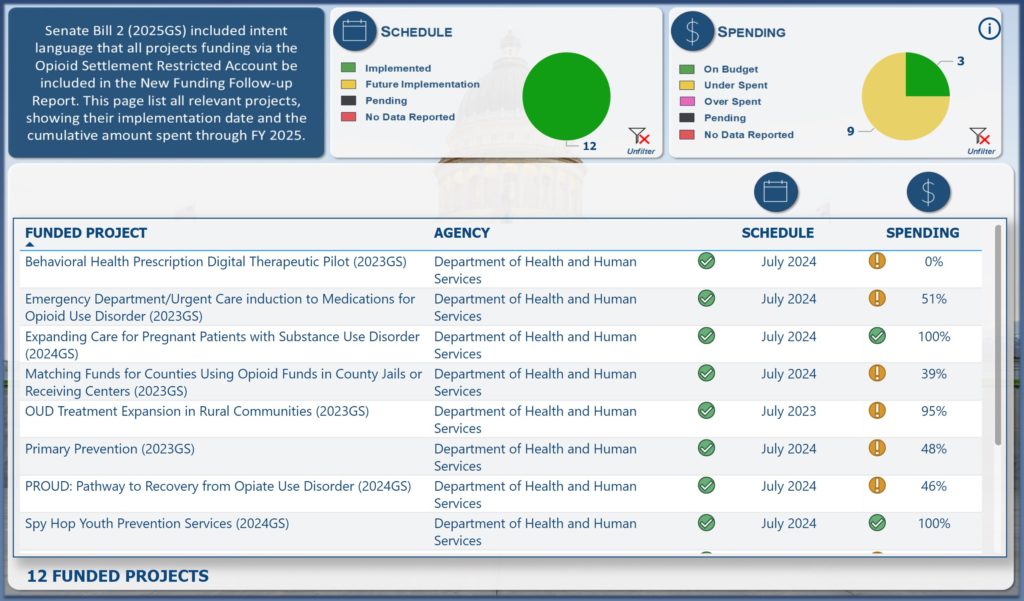To understand how our favorite sports team is doing, we look for a scoreboard that provides a snapshot of our team’s performance. Displaying key performance indicators (KPIs) such as the score, time remaining, turnovers committed, and penalties gives us important information. Empowered by this data, we can decide how much emotional capital to invest in the short-term for a game and over the long-term during a season.
Similarly, legislators often look for indicators as to whether state-funded projects or processes require adjustments to their level of financial investment in the short- and long-term. The annual New Funding Follow-up Report (Follow-up Report) serves as the budgetary scoreboard for legislators and the public to understand how past investments are performing.
Performance is a key consideration in the Utah budgeting process. During the RFA submission process, legislators are asked to describe how performance might be assessed. Much like a coaching staff that must decide on an offensive scheme based on their personnel (spread, pro-style, west coast, air raid, etc.), legislators assess what types of measures align with their desired impact—increased throughput, elevated quality, or improved outcomes from their project. Similarly, for items in the Governor’s Budget that are funded, analysts work with agency staff to assess how to best measure the impact of taxpayer dollars. Subsequent follow-up on these funded projects occurs annually, through agency reported data included in the Follow-up Report.
Building the Roster: Additional Recommendations and Types of Funding Items
During the September Executive Appropriations Committee meeting, the Legislative Fiscal Analyst unveiled this year’s Follow-up Report, covering $5.7 billion in state funding over 410 new projects approved in recent sessions. This year’s edition emphasized recommendations from LFA budget analysts, with nearly double the recommendations of prior years.

Recommendations are highlighted on the “Action Items” page, which includes the following filters to allow legislators to find those relevant and substantive to their interests or committee assignment:

Using the six filters shown above, legislators and stakeholders can more easily find insightful recommendations that achieve the following objectives:
- Staying Inbounds: Using the Committee and Agency filters, legislators can find recommendations within the boundaries of their committee assignments or areas of interest.
- Chain-Mover: The “Exclude Repeat Reporting Only” button on the top right of the dashboard is a new feature this year, filtering out projects that need more time and subsequent reporting. The remaining recommendations keep the drive alive, proposing actions like sweeps of unspent funds or possible project changes based on performance to ensure wins for as many legislative priorities as possible.
- The Playbook: As agencies report on implementation, spending, and performance, the three remaining filters can help legislators develop a list of likely actions that could be considered during the General Session, such as sweeping unspent funds for completed projects that were under budget.
Besides enhanced filtering, additional types of funding items are also included in this year’s report based on intent language in S.B. 2, “New Fiscal Year Supplemental Appropriations Act” (2025 General Session). As the Legislature has oversight of proceeds resulting from opioid litigation, this year’s report also includes the items that have received appropriations from the Opioid Litigation Proceeds Restricted account, which is shown here and accessible via the “Opioid Settlement Projects” button on the “Funded Projects” page.

Expanding the scope of projects in the 2025 New Funding Follow-up Report beyond traditional General Fund and Income Tax Fund projects ensures that accounts with finite revenue streams like those from opioid litigation settlement funds are actively managed and accounted for.
Planning the Post Season: Reviewing Line Item Measures
Long term trends (i.e. franchise health) is better assessed using line item performance measures, which are reported annually in the Performance Tab of the Compendium of Budget Information (COBI). Over the next month, gameday prep will switch from funding item measures to line-item measures, which focus on performance trends over time for programs and divisions. Legislative staff are currently working with executive branch agencies to propose modifications to existing measures, which may include archiving less relevant measures, and proposing new metrics. (As mentioned, current line-item measures can be found on the Performance tab of associated pages in COBI.)
Taking a few reps and reviewing the results in the 2025 New Funding Follow-up Report and existing line-item measures in COBI for appropriations subcommittees agencies is a great way to prepare for the budgetary playoffs on October 14th. Analysts will be soliciting feedback on current performance measures as subcommittees finalize their performance game plan and take a motion on approved line-item measures for Fiscal Year 2027.